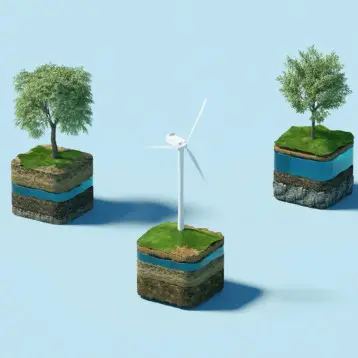|
The Oyster generator is an 18 x 12 x 2 m^3 hinged oscillator (much like a sideways gate) fixed to the seabed at depths of about 10-12 meters. Pistons attached to the oscillator capture and pump high pressure water from each wave through a pipeline to a conventional hydroelectric plant on a nearby shore, at which the conversion to electrical power takes place. To further increase efficiency, a number of Oyster generators can be combined to feed a single plant on the shore.
Since the conversion itself occurs in the plants on land, the Oyster design is much simpler than that of most offshore hydro-electric power generators. With very few moving parts, the system is relatively lightweight. According to the company, the power generation is also extremely clean; even the pistons use water for lubrication, thus eliminating the need to use any kind of underwater oil. In fact, Carbon Trust estimates that a single Oyster generator could save as much as 500 tons of carbon per year. Additionally, since all electrical elements of the generator are located on land, the dangers of operating such equipment underwater are removed from the equation. Aquamarine Power engineers also note that the device operates silently and does not disturb the nearby sea life.
|
Following extensive testing of several small scale models of varying sizes, a full scale test generator was fabricated last year and has successfully undergone on shore testing. The first production model is currently being installed at the European Marine Energy Centre at Orkney, Scotland. This generator will be managed by marine drilling contractor Fugro Seacore and should contribute 300 to 600 kilowatts to Scotland’s national electricity grid. Recent tests of a full size model with a single pumping piston successfully delivered more than 170 kilowatts of power into the grid. A production device with two pumping pistons is planned to be installed at Orkney during the summer and is expected to become operational as early as the following fall.
TFOT has previously reported on other hydroelectric generators including the Wave Treader hydro power attachment that connects to the base of offshore wind turbines to generate hydropower, the VIVACE generator that uses vortex induced vibrations in water with slow currents to generate power, the Anaconda snake-like tubes that use internal bulge waves to generate power, the Oscillating Wave Column that uses waves to force air into turbines to generate electricity, and several other technologies designed to take advantage of tidal forces to generate power.
Read more about the Oyster hydro-generator at the Aquamarine Power technologies page.
Image icon credit: pdphoto.org












